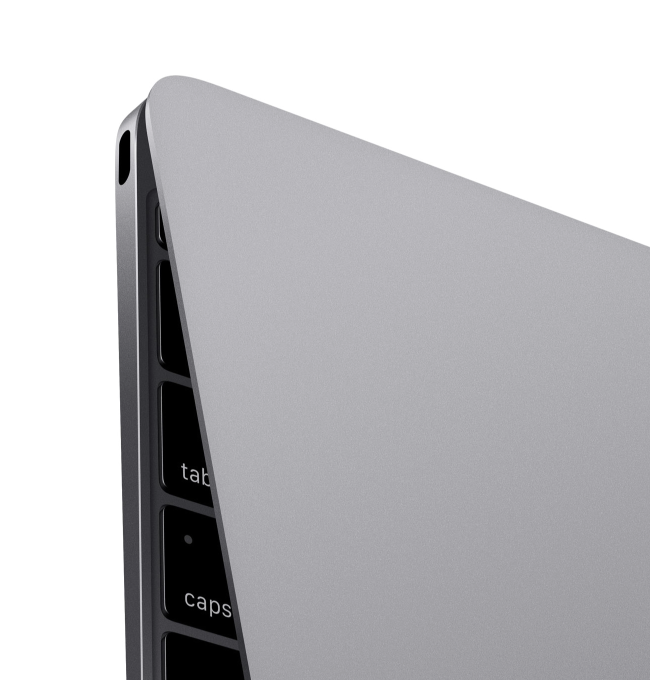 - MacBook 2015-03-25 14-16-32.png)
Since the announcement of the new 12in MacBook and my initial thoughts, I have had time to look more closely at the new lightweight with its alluring retina display. The minimalist concept of the MacBook is exercising the minds of all Apple pundits as never before. Everyone wants one, if only for the novelty of the sub-1kg weight, the intriguing single port and that wonderful retina screen.
Most, however, have reservations about the performance. With its mobile Intel Core M processor, the new MacBook is more akin to an iPad or Google’s Chromebook than to a traditional MacBook Air or Pro. For many of us, particularly for anyone wishing to run Lightroom or Photoshop, the MacBook is likely to prove unsatisfactory.
This isn’t to say the MacBook will be a disaster. On the contrary, it will be a huge success. It will almost sell itself when it eventually sits on the pale wooden table in your nearest Apple Store. And for many notebook users it will be just what they need. As Jason Snell said last week, the MacBook doesn’t need you to love it, but someone will:
A long time ago I learned an important lesson about being a product reviewer: Always consider the audience for a product. They’re who you’re writing for. I have a recent-model MacBook Air, so am unlikely to be interested in buying a new MacBook—but the facts of my personal relationship with technology should not really matter when I’m thinking about the bigger picture.
David Sparks of MacSparky wrote a spot-on assessment of the potential customers for the MacBook soon after the announcement. Since then he has rightly added a further category: The people who currently use an iPad and an external keyboard. He’s right on this too. If you are happy writing on an iPad and feel it necessary to add a keyboard, either standalone or as part of a case, the MacBook is probably a better bet. There are just a few grams of difference between an iPad with keyboard case and the MacBook.
As a second computer, especially for the road warrior, the MacBook is just right. Yet it isn’t for everyone, even those who, like me, have a more powerful desktop computer in the office. I do need to run Lightroom while away for more than a day or two and the power limitations of the MacBook soon become apparent.

Dylan Tweney, writing for VentureBeat, has spent considerable time comparing the MacBook with the existing 13in MacBook Pro. While he was initially seduced by the new featherweight computer, he believes it suffers from two serious flaws:
One, that processor! It’s a 1.1GHz or 1.2GHz Intel Core M processor, aka the “Broadwell” line of chips. Apple and other PC makers, not to mention Intel itself, have done a great job of obfuscating the differences between their chips over the past few years. Let me simplify it for you: This is a mobile chip, not a PC chip. It means the MacBook is actually closer to an iPad than it is to a MacBook Pro or a MacBook Air. Don’t plan on running processor-intensive applications like PhotoShop, Logic Pro, or graphics-intensive Mac games on this device. Sure, you can probably run them, but you’ll quickly discover why Apple markets its truly powerful MacBook Pro at people who actually want to run applications like this.
Two, the USB-C port: There’s only one. While that might seem like an elegant move towards design simplicity, the fact that it is the MacBook’s source of power and only wired peripheral port is a huge drawback. If, like many laptop users, you like to plug in your laptop while connecting it to an external monitor, you’ll be out of luck with the MacBook. It will force you to choose between recharging and connecting to a monitor. And if you want to connect to a monitor in the first place, you’ll need to buy a $79 adapter cable.

His first point is the really important one. Even the base 13in MacBook Pro will run rings round the MacBook in terms of processing speed. It also has a bigger screen, a true 13.3in. The 12in screen of the MacBook is barely larger than the 11.6in screen found on the 11in MacBook Air. For a direct comparison between MacBook and MacBook Pro see this in-depth assessment by Gizmag.
Furthermore, the newly updated 2015 MacBook Pro is a real speed demon. According to Computerworld, in many respects the 2015 model is twice as fast as its predecessor. This simply widens the performance gap between the MacBook and the Pro and strengthens the argument to buy the faster computer if processor-intensive applications are to be used.
I am less exercised about the single do-it-all port. It is probably the future for Apple notebooks and part of me says it’s a good idea to get used to it sooner rather than later. No doubt there will be many ingenious expansion docks available within months.
Without a doubt I would dearly love to own one of the new MacBooks. I could even be persuaded that it is a suitable and more practical alternative to the full-size iPad Air. But as a workhorse for demanding tasks it falls short. The case for the 13in MacBook Pro, especially if maxed out with an i7 processor and 16GB of RAM, is pretty conclusive.
